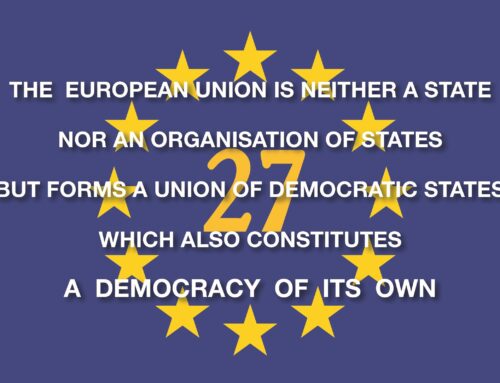On 29th October 2022, I took part in the Federal Trust’s conference on the future of the United Kingdom.
Though the day had a focus on federalism my preferred model leans towards a form of close constitutional confederalism, which neatly deals with the sovereignty aspirations of the home nations in regards to their National Parliaments, and allows for the federalisation of the English regions in relation to new Parliamentary arrangements for England.
The challenge of our time is not so much that exploration of constitutional futures is not being had, but that it is progressed separately within each nation rather than collectively as neighbours.
The fact that Scotland is considering a second independence referendum so soon after its first poll, without constructively having had the opportunity, in the intervening time, to start engagement with an isles-wide convention highlights the point. Further, the ongoing Commission on the Constitutional Future of Wales, established by the Welsh Government in July 2021, will soon produce its interim report.
Taking the long view, there is now a pressing need to investigate some common ground, if not a broad strategic compromise, in a new isles-wide partnership of states for the 21st Century.
Such a framework is outlined in my blog A Design for Modern Britain: Confederal Federalism.
In constitutional terms, the proposition is introduced through a codified confirmation that all powers and rights rest with the individual nations, which in turn delegate or pool a balanced portfolio of key functions and objectives to the centre by means of an agreed confederal treaty, with aspects of federal-type controls built into specific mechanisms.
- To sustain our economic union, the proposal assumes a common currency, bank and market, as well as an isles-wide responsibility for macro-economic decision making.
- The social union is maintained through the guarantee of individuals’ rights of movement, residence and employment across all nations, along with continuation of the British monarch in role.
- In upholding our joint security, the forces of defence and organisation of foreign policy are both held centrally. This is the protective rock on which our shared principles and values, as projected through common, practical functions, can develop, be maintained, and prosper.
In application and execution, the balance of social, economic, and security interests are effectively enacted through a limited but mature political union comprising a central Council of the Isles to which individuals elect representatives, in addition to their respective National Parliaments. Each territory operates its own legal jurisdiction, with a Supreme Court of the Isles acting as the ultimate authority on the legitimacy of any laws and rights which are assigned to the centre by treaty. Nations further define the composition and responsibilities of regional and local authorities.
A Committee of Member Nations which comprises the First Ministers of the individual territories and the Prime Minister of the Council promotes cooperation and harmonisation of laws, where necessary, on matters that, whilst requiring cross border coordination, are the direct responsibility of the National Parliaments. The structure embeds the values of equality and solidarity within its strategic objectives, providing opportunities for these principles to be reinforced in action through supporting partner members’ financial robustness, infrastructure and security going forwards.
But, a federalist may ask, what is the difference between this proposed form of close confederalism and a UK Federation?
It is the case that many of the central functions map across and, in both models, individuals participate democratically in electing representatives to established legislative parliaments at two levels of government. However, a fundamental difference rests in the nature of decision-making processes underpinning the application of shared functions.
In a UK Federation, a top-down approach to representational authority remains within an overarching framework of clearly delineated responsibilities assigned to the territories and that of the core, which remains the centre of gravity. The umbrella political identity is a powerful construct, likely limiting genuine national development, progress and reform.
In a model of confederal-federalism, on the other hand, the weight of influence and purpose rests with the nations. The centre exists to serve in facilitating the delivery of the common social, economic and security aims, as already outlined. Individuals elect representatives to take part in central policy decision-making processes mostly on behalf of their member nations’ interests.
With many now asserting a multicultural Welsh, Scottish, Northern Irish or English character before claiming a form of dual nationality which also embraces a British personality, it is legitimate to reconsider the nature of Westminster’s parliamentary sovereignty such that it more appropriately encompasses authority only over select key isles wide functions held in mutual interest and regard by the nations.
The consequential and pressing strategic issue going forward relates to whether sovereignty, as currently understood, should be shared across these five territorially defined identities (including that of Britain) in a traditional federal arrangement or instead assigned individually to the four nations—Wales, Scotland, Northern Ireland and England—which in turn would pool parts of their sovereign authority to common central institutions of a fundamentally British civic character.
There is now, perhaps more than at any other time, an opportunity for those advocating greater autonomy for the home nations to present a progressively sophisticated platform of debate for both change and reform based wholly on the partnership principles of constitutional collaboration.
Working together, rather than as four nations separately, we can achieve a better future for all.







Leave A Comment